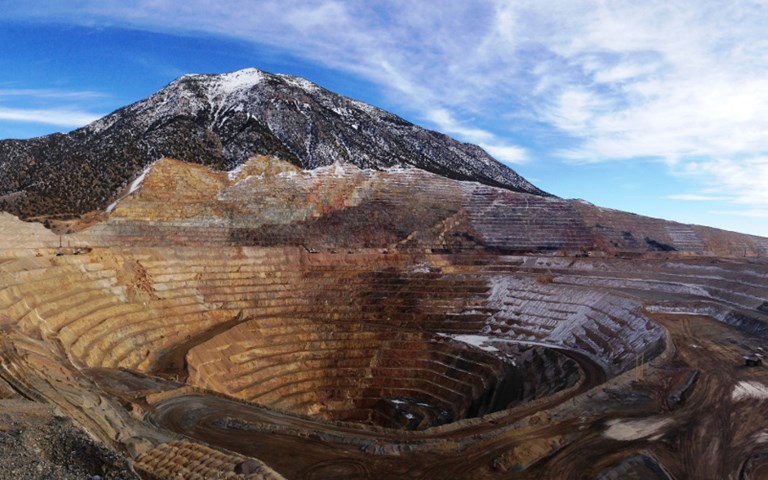Barrick's Cortez gold mine in Nevada. The state is at the heart of Barrick's hostile merger bid for Newmont, as both companies have several operations there. Courtesy of Barrick Gold
Barrick Gold is making an all-share hostile bid for Newmont Mining, positioning itself as a better offer to Newmont shareholders than Goldcorp.
The bid would see Newmont shareholders receive 2.5694 Barrick shares for each Newmont share they own, and would create a company worth more than US$40 billion.
According to a Barrick press release, the deal would generate more than US$7 billion net present value of synergies before taxes, which Barrick Gold CEO Mark Bristow said was effectively the premium on the deal. Barrick said the combined company would have annual revenues of US$15.6 billion, operating cash flow of approximately US$4.6 billion, and total gold reserves of 141 million ounces.
Barrick shareholders would own 55.9 per cent of the company, and Newmont shareholders the remaining 44.1 per cent.
The combined company would have eight “tier-one” assets, including Cortez, Pueblo Viejo, Loulo-Gounkoto, Newmont’s Ghana operations and combined Goldstrike-Carlin and Turqouise Ridge-Twin Creeks. Barrick has previously defined tier-one assets as low-cost, long-life mines. Bristow said a combined Goldrush-Fourmile could potentially become a ninth tier-one.
At the heart of the combination is the state of Nevada. On a conference call with analysts and investors, Bristow said combining Barrick and Newmont’s operations in Nevada would create US$4.7 billion of the proposed efficiencies.
“Barrick has the bulk of the high-grade reserves and Newmont owns key processing plants,” Bristow said. Combining them would allow the company to see Nevada as “effectively one ore body,” creating the opportunity for better mine planning, lower operational costs and higher cut-off grades.
Related: Analysts say more mergers and acquisitions may be coming as gold miners look to reinvigorate investor enthusiasm
Bristow did not mince words on the call, saying that Newmont’s US$10-billion acquisition of Goldcorp was a typical example of the type of M&A activity he has criticized in the past for failing to create shareholder value. He said Barrick’s offer was “so obvious and compelling” and was backed by strategic and financial rational.
“That’s the reason…we decided to make an unsolicited, but clearly superior, proposal to Newmont shareholders,” he said.
He said Barrick’s offer is contingent on Newmont abandoning its acquisition of Goldcorp. As part of that deal, Newmont must pay Goldcorp a US$650-million break fee if it backs out. Bristow said the company had factored that cost into its proposal.
“We as a team can’t wait until after Newmont and Goldcorp merge, because we don’t want Goldcorp’s lower-quality assets in our portfolio,” he said.
In a press release on Monday, Newmont confirmed it had received Barrick’s bid. The company said the proposal represents a negative premium based on market prices at the close of business on Friday.
“Newmont has previously reviewed and rejected potential combinations with each of Barrick and Randgold Resources Ltd., prior to their merger,” the company said. “Newmont’s proposed combination with Goldcorp represents the best opportunity to create optimal value for Newmont’s shareholders and other stakeholders.”
Newmont said the Goldcorp deal would offer superior shareholder returns and other benefits including US$100 million in pre-tax synergies.
On Sunday Newmont said in a release that it had received a shareholder proposal from a Barrick subsidiary to amend a company bylaw to reduce the share ownership threshold for requisitioning shareholder meetings to 15 per cent, from 25 per cent currently. The subsidiary also put forward a proposal to repeal any bylaw amendments passed after Oct. 24, 2018, of which Newmont said there were none.
Bristow declined to comment on the proposals, noting that the companies have common shareholders.



